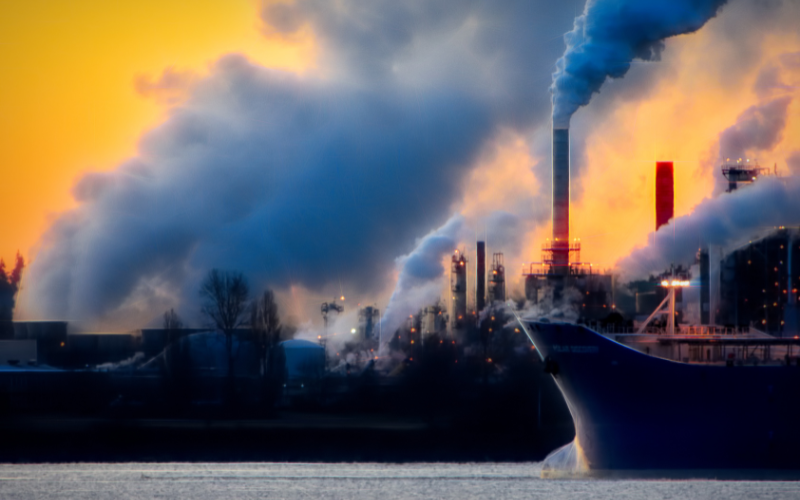Environmental degradation and global warming are among humanity’s most pressing challenges. The degradation of our planet’s ecosystems, coupled with the rise in global temperatures due to climate change, threatens the natural environment, human health, economic stability, and social equity. Addressing these issues requires urgent action and a collective effort from individuals, communities, businesses, and governments worldwide.
Understanding Environmental Degradation and Global Warming
Environmental Degradation
Environmental degradation refers to the deterioration of the environment through the depletion of natural resources, loss of biodiversity, and the destruction of ecosystems. Key factors contributing to environmental degradation include:
- Deforestation: The clearing of forests for agriculture, urbanization, and logging results in habitat loss, reduced biodiversity, and increased carbon emissions.
- Pollution: Air, water, and soil pollution from industrial activities, agricultural runoff, and waste disposal contaminate ecosystems and pose serious health risks to humans and wildlife.
- Soil Degradation: Unsustainable agricultural practices, deforestation, and overgrazing lead to soil erosion, loss of fertility, and desertification.
- Loss of Biodiversity: Habitat destruction, climate change, and overexploitation of species contribute to the extinction of plants and animals, disrupting ecosystems and diminishing their resilience.
Global Warming
Global warming is primarily driven by the increase of greenhouse gases (GHGs) in the atmosphere, resulting from human activities such as burning fossil fuels, deforestation, and industrial processes. The consequences of global warming include:
- Rising Temperatures: Increased global temperatures lead to more frequent and severe heatwaves, impacting agriculture, water resources, and public health.
- Melting Ice Caps and Glaciers: The warming climate causes polar ice caps and glaciers to melt, contributing to rising sea levels that threaten coastal communities.
- Extreme Weather Events: Global warming intensifies the frequency and severity of extreme weather events, such as hurricanes, floods, droughts, and wildfires, leading to significant social and economic disruption.
- Ecosystem Disruption: Changes in temperature and precipitation patterns disrupt ecosystems, affecting species distribution, migration patterns, and reproductive cycles.
Strategies for Addressing Environmental Degradation and Global Warming
Mitigation Efforts
- Transition to Renewable Energy: Shifting from fossil fuels to renewable energy sources, such as solar, wind, and hydroelectric power, reduces greenhouse gas emissions and promotes sustainability.
- Energy Efficiency: Implementing energy-efficient practices in buildings, transportation, and industry can significantly reduce energy consumption and emissions.
- Sustainable Agriculture: Adopting sustainable agricultural practices, such as crop rotation, organic farming, and agroforestry, can enhance food security while minimizing environmental impact.
- Afforestation and Reforestation: Planting trees and restoring degraded forests help absorb carbon dioxide from the atmosphere, promote biodiversity, and prevent soil erosion.
Adaptation Strategies
- Resilient Infrastructure: Developing infrastructure that can withstand extreme weather events is crucial for protecting communities and minimizing damage.
- Water Management: Implementing sustainable water management practices, such as rainwater harvesting and efficient irrigation, can help communities adapt to changing precipitation patterns.
- Ecosystem Restoration: Restoring degraded ecosystems, such as wetlands and mangroves, enhances biodiversity, provides natural protection against storms, and improves resilience to climate change.
Policy and Advocacy
- International Agreements: Countries must collaborate on international agreements, such as the Paris Agreement, to set emission reduction targets and share best practices for climate action.
- National and Local Policies: Governments should implement policies that promote sustainability, such as carbon pricing, incentives for renewable energy, and regulations on pollution.
- Community Engagement: Engaging communities in environmental conservation efforts fosters local ownership and responsibility for protecting natural resources.
- Education and Awareness: Raising awareness about the importance of environmental conservation and climate action can empower individuals and communities to make informed choices.
Conclusion
Addressing environmental degradation and global warming is essential for ensuring a sustainable future for future generations. By adopting comprehensive strategies that encompass mitigation, adaptation, policy advocacy, and community engagement, we can combat these pressing challenges. Collective action at all levels—individual, community, corporate, and governmental—is crucial for creating a resilient and sustainable world. As stewards of the planet, we have a responsibility to protect our environment and ensure that it thrives for future generations.


Be First to Comment